Why Choose Us
Our service
Our team is take fast action for customer experience. We guarantee to reply your email in less than 24 hours in working days.
Advanced Equipment
With complete advanced production testing equipment, perfect quality assurance system ,and stable ,reliable product quality,we won user's consistent high praise.
Quality & Risk Management
We ensure the high quality standard by industry-specific expertise and execute sample approval for every new business.
Global Shipping
We have long-term logistic partner to enhance the stability of transportation and well manage potential shipment risk.
What is Down Lead Clamp
Downlead clamps also serve to maintain the desired separation distance between different cables. Some of the clamps have built-in features for grounding or bonding purposes which enhances electrical safety. It also minimizes the risk of electrical surges or static discharge. Downlead clamps play a crucial role in maintaining the integrity and reliability of electrical and telecommunications systems by securing and protecting the downward-running cables.
Benefits of Down Lead Clamp
Easy to install
The installation of a down lead clamp is easy, convenient, reliable, and fast. The down lead clamps can be placed without any sophisticated tools and devices, and an amateur person can easily install them. Due to the easy mechanism to install, work time has also been reduced significantly. Moreover, the efficient setup of the down lead clamp allows efficient and accurate installation and operation.
Versatility of application
The down lead clamp can easily be adapted to meet any requirement. It can be used with cables of any diameter and type. The down lead clamp’s size can be easily adjusted through the screws and bolts.
Improved security
The device has enhanced strength due to the manufacturing material, thus making them very suitable for various applications. They can easily withstand enormous forces and accidents due to loose grip and slippages. The enhanced holding power provides safety to the delicate optical fiber.
Robust design
Cable clamps lowes come in robust and innovative design. They are designed to meet the special needs and requirements of the clients. Down lead clamps come with special adapters that get rid of drilling issues.
Types of Down Lead Clamp
Cable clamp
This is the basic type of downlead clamp used for general-purpose cable management. It typically consists of a clamp body with a groove to hold the cable securely in place.
Fiber optic cable clamp
These are designed to secure and protect delicate fiber optic cables. The specific features prevent excessive bending or stress on the fiber optic cable to promote optimal performance.
Combination clamp
Some clamps have a design that accommodates multiple cables of different types.
Messenger clamp
These secure both the messenger wire and the cable simultaneously. The messenger hanger provides additional support and distributes the weight of the cable evenly.
Coaxial cable clamp
Such clamps provide a secure grip and prevent damage to the coaxial cable’s outer insulation. They have a round or oval -shaped channel to accommodate the coaxial cable’s unique structure.
Adjustable clamp
These clamps provide flexibility in terms of cable size and tension. They usually feature adjustable screws or mechanisms that allow for easy customization and fine tuning of the clamp’s grip on the cable.
Ground wire clamp
Ground wire clamps secure and ground the grounding wire. They also have a dedicated lug and terminal for attaching the grounding wire to ensure proper electrical grounding.
Application of Down Lead Clamp
Telecommunications
Downlead clamps secure and support cables like coaxial cables, fiber optic cables and communication wires. They apply in cable TV, broadband internet, telephone network and data centers.
Electrical power distribution
Downlead clamps in electrical power systems secure and support power cable running from overhead power lines to buildings or other structures. They prevent sagging cables and maintain proper tension for a reliable electrical connection.
Transmission lines
The clamps work in high voltage transmission lines to secure and support downleads or jumper cables that connect the transmission lines to distribution or substation equipment. They promote the stability and integrity of the connections.
Antenna installations
The clamps are vital in antenna installations which provides support and strain relief for coaxial cables that connect antennas to communication equipment. They also maintain a proper positioning and alignment of antennas which ensure a optimal transmission and reception.
Outdoor lighting
Downlead clamps are employed to secure the cables that connect lighting fixtures to the power supply. They also help to relief and protect the cables from external forces such as wind and physical impact.
Cable management
Downlead clamps work for general cable management purposes in various settings such as residential, commercial and industrial buildings. They also help to organize and secure cables running along walls, poles or other structures.
Street signage and traffic control
The clamps secure and support cables for street signage, traffic lights and other traffic control systems. This ensures stability and reliability of the electrical connections in outdoor environments.
How to Choose Down Lead Clamp
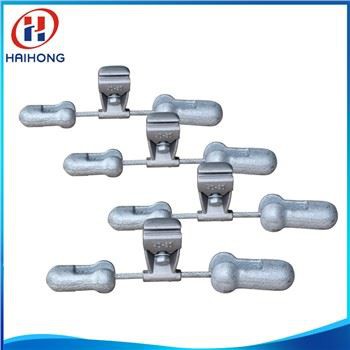
Find the right material
If you are looking for downconductor clamps, there are many grades of steel. Steel is the most versatile material and is graded based on different parameters such as toughness, weldability, ductility, hardness, rust resistance, shock absorption, etc. You first need to describe what the purpose of your fixture is, what conditions it will be affected by, what qualities in the material are more important than others? For example, if your clip will be used near the ocean, it will need to be protected from rust, otherwise your clip will quickly look like a hairpin.
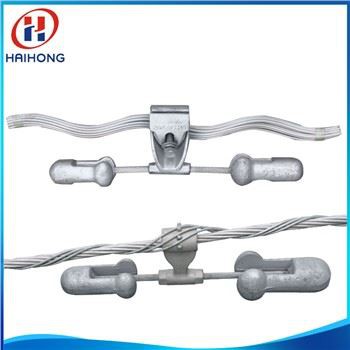
Dimensions of down lead clamp
The downconductor clamp you choose needs to work well in all seasons, so you'll need to account for expansion and contraction due to temperature changes. You also don’t want the clamp to be larger than it needs to be or you’ll end up paying more. Measure the outer diameter when considering size. Adjustable clamps are a good choice because they allow you to modify the dimensions later. If the clip is too big, it will bend outward, which is unsafe. If the closure is further away, leakage may result.
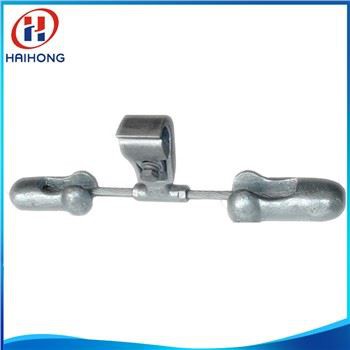
Material of down-lead clamp
It is important to consider the material of the downconductor clamp because they have different hardness, thickness, strength or density. Softer materials are easier to install because they are flexible, but they can withstand larger temperature changes and high stresses. If you choose a soft material, using clips with softer edges will prevent cutting or tearing. Some examples of soft materials used for hoses are silicone and polyurethane.
Assess the installation location
Determine the suitable location for installing the clamp. Factors like cable length, proximity and cable path should be considered.
Prepare the mounting surface
Ensure that the surface is clean and free from any contaminations like dirt, rust or paint.
Position the clamp
Place the camp on the mounting surface at the desired location aligning with the groove of the clamp.
Mark the mounting holes
Mark the positions for the mounting holes on the mounting surface. Most of the clamps have multiple holes for flexibility.
Drill the mounting holes
Drill the appropriate bits to create the mounting holes at the marked positions. Ensure that the holes are deep enough to securely anchor the clamp to the mounting surface.
Secure the clamp
Place the clamps over the mounting holes and insert the appropriate screws or bolts though the clamp holes. Add washers and nuts on the other side of the mounting surface.
Tighten the fasteners
Tighten the fasteners to firmly secure the clamp to the mounting surface. This ensure that the clamp is stable and immovable.
Insert and secure the cable
Place the cable into the groove of the clamp and secure it with more fasteners.
Tips for Using Down Lead Clamps
Different down conductor clamp models are suitable for different conductor diameter ranges. When using down-conductor clamps, the appropriate model should be selected based on the wire diameter.
Downconductor clamps usually have a snap-on design that can be easily assembled with other conductors or equipment. Special attention should be paid to this when selecting downconductor clamps to ensure compatibility with other equipment.
Down-conductor clamps are usually made of metal materials, so you need to pay attention to the humidity and corrosiveness of the use environment. In harsh environments, down-conductor clamps with anti-corrosion properties should be selected to extend service life.
Before using the downconductor clamp, it should be checked to ensure its clamping strength and electrical connection performance. If it is found that the clamping is not firm or the electrical connection is poor, the down lead clamp should be replaced or adjusted immediately to avoid safety hazards.
Precautions When Using Down Lead Clamp
1. Selection of installation point: When installing the down-lead clamp, you need to select a suitable installation point, which should meet the size of the clamp and the diameter of the cable.
2. Clamping strength: The clamping strength should not be too large or too small. If it is too large, the cable will be crushed or damaged. If it is too small, the cable will loosen or fall off.
3. Reliable fixation: The fixation should be firm and reliable. Taking into account the influence of external forces and environmental factors, it is necessary to ensure that the clamp is firmly fixed and the cable will not fall off or loosen.
4. Material selection: Choose reliable and applicable materials. Especially for special environments, such as high temperature, corrosion, etc., you need to choose more durable materials.
Our Factory
Shandong Haihong Power Equipment Co., Ltd. is located in wordwide cultural city - Qufu City,Shandong Province,China.Established in 2007.Our factory size is 20,000 square meters.it is specializing in the production of domestic ground beforehand with the optical fiber cable and line hardware production enterprise.Our production operation scope is involved in electric power,communication,railway,and many other fields.Through a modern scientific management,we have get a remarkable economic benefit.


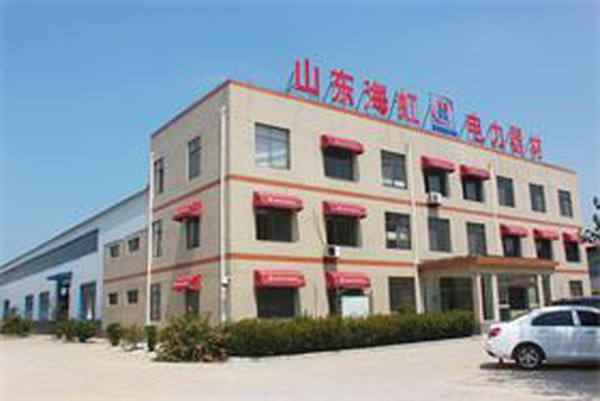
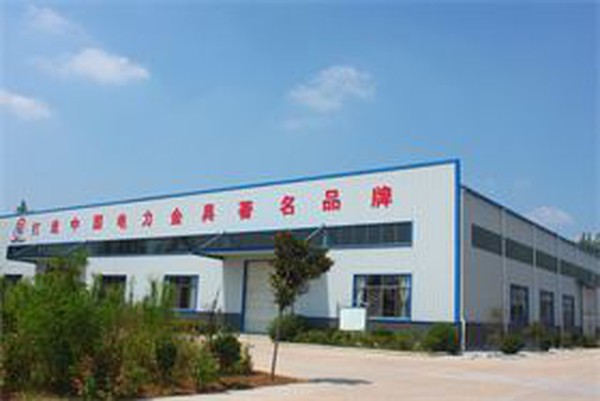
Certificate

FAQ
As one of the most professional down lead clamp manufacturers and suppliers in China, we're featured by quality products and competitive price. Please rest assured to wholesale high quality down lead clamp in stock here from our factory.
Suspension Clamp, Helical Spiral Vibration Damper, Spiral Vibration Damper












